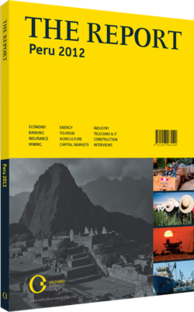OBG talks to Carlos Pinillos González, CEO, Tecnológica de Alimentos

Interview: Carlos Pinillos González
How will the 2012-2016 Multiannual Sector Strategic Plan on fishing be implemented?
CARLOS PINILLOS GONZALEZ: There has not been much ministerial continuity so policies have often shifted focus. However, the current government has emphasised the need for sustainability in the fishing sector, especially through the development of small-scale fishing which can contribute to the food security of people in the highlands. New laws are being implemented to minimise the adverse environmental impacts of industrial processes, like the deterioration of water and air quality.
Traditionally, fishing has been far less regulated than, for example, mining. But now that the sector is expanding its trade with Europe and China, there are new requirements and standards to which companies need to adapt. That is globalisation, and the private and public sectors in Peru support this trend in the name of entering new markets and expanding trade.
Where do you see the most export growth?
PINILLOS: The three main export products are fishmeal, fish oil and frozen fish for human consumption. The main export market for fishmeal is China, which has large demand because of its agricultural sector and especially pork and shrimp production. As the Chinese middle class grows, so will this demand. The European, especially Norway’s, salmon industry also uses Peruvian fishmeal and demand is growing in Turkey and East Asian countries like Japan and Taiwan.
Fish oil is not only used in agriculture but also for human consumption, which has been growing by around 40% a year. The projection is that in 10 years most fish oil will be sold for human consumption because of increased awareness of the health benefits of Omega-3 fatty acids. The US and Europe are the top markets, although Chinese demand is the fastest growing.
What can be done to counteract illegal fishing?
PINILLOS: A distinction needs to be made between artisanal or small-scale fishing and informal industrial fishing, in which there has been much improvement in regulating. A new satellite system allows the authorities to locate any vessel navigating outside the legal fishing area. There is also more control in terms of the permits and papers the vessels need to enter a port, which can now be verified digitally. Additionally, a regulatory authority takes samples and measures the size of the fish to ensure they meet minimum requirements for environmentally conscious fishing.
However, in the small-scale fishing sector, there is still a lack of vigilance, resulting in continued disobedience of environmental regulations with some operators even using explosives. Catches of certain species, like Peruvian shrimp and black scallops, have been banned due to overfishing. As for other species, it is still difficult to measure the environmental impact of overfishing, which could be highly detrimental.
What opportunities exist for foreign investors in Peru’s second-largest industry?
PINILLOS: This is a protected industry so getting involved in the production of fishmeal, for example, as a foreigner is very difficult. I mean difficult in the sense that one cannot go to the ministry and buy a licence or approach the local market to build a plant. However, an investor can purchase a company that is already operating. Norwegian investors are involved in CopeInca and Austral and Chinese investors in CFG. These are mainly anchovy businesses, but there is potential in other segments.
Two types of investment are needed now. The first is to convert 100% of fishmeal manufactured into the highest-quality product on the market. Many companies have some way to go to meet the required standards. The second area where increased investment is needed is in fish for human consumption. Some companies are investing in frozen goods, others in canned food and yet others are trying to develop products with squid, prawns or scallops. Overall, sector exports are going to grow alongside an increase in value-added production on both small-scale and industrial levels.
You have reached the limit of premium articles you can view for free.
Choose from the options below to purchase print or digital editions of our Reports. You can also purchase a website subscription giving you unlimited access to all of our Reports online for 12 months.
If you have already purchased this Report or have a website subscription, please login to continue.

